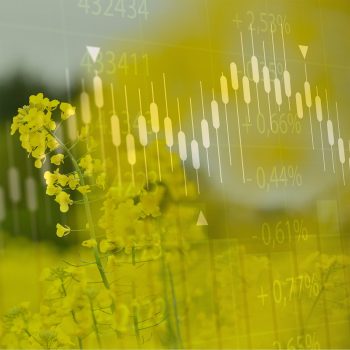Everyone at Saipol has heard of Ebitda, even if the term is not easy to pronounce or understand at first. This is normal, as it is a financial term. Each month, this company performance indicator is transformed by the financial team into a communication tool, along with the Balanced Scorecard, in order to monitor the budget execution and control risks. The company is successful at this game, and not only regarding the economic criteria. Barbara Ferrand-Lecocq, Chief Financial Officer, explains the financial communication policy she has put in place since 2018.

Who reads 300-page reports full of figures in a company? No one. And yet, in these bundles, there are gems of information that can be used to control risks and better manage the flow of money. So it is not surprising that as soon as Barbara Ferrand-Lecocq took over as head of finance in 2018, she skilfully archived them – you never know… and quickly instituted a new rule for sharing such strategic information: Let’s talk numbers, regularly, in the right amount to give the right information. “Every profession has its language”, she says. “However, the return to profitability requires that managers be provided with relevant indicators so that they can make the right decision”.
Saipol’s activity is partly based on risk-taking linked to market volatility. The role of the Chief Financial Officer is to ensure the intervention framework set with traders is respected. She also relies on her multidisciplinary team to share the monitoring indicators of the strategic plan developed in 2018. They are presented each month to managers and social partners, giving meaning to her action. “In my financial communications, I speak to all employees”, she adds, “I explain what we do and why. ”
The pedagogy of complexity
So what is her recipe for making what seems obscure understandable? Firstly, by showing Saipol’s performance within the Avril Group: “It is much more motivating”, says Barbara Ferrand-Lecocq. Then, by relying on the Ebitda* gap analysis, which enables the company’s performance to be assessed. She compares the budget with what is actually achieved during the year. “It is the indicator!” she smiles. “The tool is very visual: a graph and red or green bricks that can be moved to appreciate the negative and positive influences in order to achieve the objectives”. Almost a game! In fact, this representation is called a bridge. Even if it is not initially understood, Ebitda is now better and better understood by employees thanks to the pedagogy.
The budget is not just about financial performance
The second communication tool deployed is the balance scorecard. Again, it is a matter of bricks, nine in total, classified by categories of initiatives that must be accomplished to fit the strategic plan. This steering chart is balanced because it does not concern only the financial result. It concerns value creation, social, industrial performance, the information system, innovation, quality, and risk and safety aspects. These themes include all the projects that are developed together in the company. They are colour coded green, orange or red according to their suitability for the objectives set. The budget is not just about financial performance! “Now that it’s working, I’m confident that we can get our company back on its feet”, she concludes. “Our method delivers what it was intended to deliver. In 2021, we are on course with the strategic plan! The return to profitability is mainly achieved through collective action. ”
* Earnings before interest, taxes, depreciation and amortization

“To find new growth drivers, you need the right financial tools, accessible to all. ”


